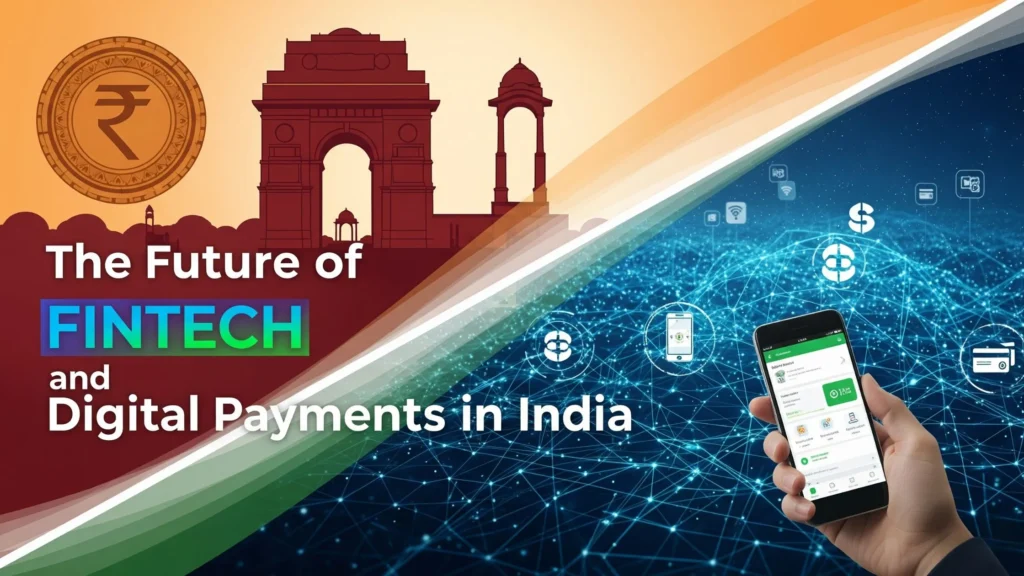The Future of Fintech and Digital Payments in India: A Cashless Revolution in the Making
India’s financial landscape has undergone a dramatic transformation in the past decade. From standing in long queues at banks to making instant UPI transfers with a tap, the shift has been nothing short of revolutionary. As technology continues to evolve, fintech and digital payments are poised to redefine how Indians save, invest, and transact in the years ahead.
The Rise of Digital Payments in India
The turning point for India’s digital payment ecosystem came with the launch of UPI (Unified Payments Interface) in 2016. Today, UPI processes over 14 billion transactions monthly, outpacing credit and debit cards combined. Platforms like PhonePe, Google Pay, Paytm, and BharatPe have made payments seamless for everything—from paying utility bills to splitting restaurant bills with friends.
This widespread adoption has been fueled by affordable smartphones, cheap internet data, and government initiatives like Digital India and Jan Dhan Yojana, which have brought millions into the formal banking system.
Fintech’s Expanding Footprint
Fintech in India now covers much more than payments. The ecosystem includes:
- Neo-banking: Digital-only banks like Jupiter and Fi offer personalized banking without physical branches.
- Lending platforms: Startups like KreditBee and CASHe are making quick personal loans accessible to first-time borrowers.
- Investment apps: Platforms like Groww, Zerodha, and Paytm Money allow anyone to invest in stocks, mutual funds, and ETFs with ease.
- Insurtech: Companies like Acko and Digit are reshaping how Indians buy and manage insurance policies.
This diversification is creating a financial super-app model, where users can manage all their financial needs on one platform.
Key Trends Shaping the Future
- Contactless and QR Code Payments
NFC-enabled cards, wearables, and QR codes will make payments even more seamless. UPI Lite and offline payment features will improve reliability in low-network areas. - Cross-Border UPI Payments
India has begun linking UPI with other countries’ payment systems, enabling instant and low-cost international transfers. - AI-Powered Financial Services
Artificial intelligence will enhance fraud detection, offer personalized investment advice, and automate expense tracking. - Digital Lending Growth
With AI-driven risk assessment, loans will be approved within minutes, opening credit access to small businesses and individuals in rural areas. - CBDC (Central Bank Digital Currency)
The Reserve Bank of India is piloting the Digital Rupee, which could revolutionize how money is issued and tracked.
Challenges to Overcome
Despite rapid adoption, there are hurdles:
- Cybersecurity risks: With more money moving online, fraud and hacking attempts are increasing.
- Digital literacy gaps: Rural and elderly populations need more education to confidently use fintech tools.
- Regulatory clarity: Striking the right balance between innovation and consumer protection remains a challenge.
Addressing these issues will be key to building a safe, inclusive digital payment ecosystem.
The Road Ahead
The future of fintech and digital payments in India looks promising. By 2030, the Indian fintech market is projected to reach $1.5 trillion in transaction value, with UPI leading the charge. Rural areas, currently underserved, will be the next frontier as internet connectivity and smartphone penetration continue to rise.
India is also likely to see a greater convergence of banking and fintech, with traditional banks partnering with startups to deliver faster, smarter, and more personalized services. The combination of innovation, regulatory support, and consumer trust could make India a global leader in digital finance.
Conclusion
Fintech and digital payments are not just about convenience—they are about inclusion, empowerment, and economic growth. From small kirana stores accepting QR payments to global cross-border transfers powered by UPI, the possibilities are endless.
If India continues on its current trajectory, the next decade could see the country not only becoming a cashless society but also setting benchmarks for the rest of the world in digital finance innovation.



